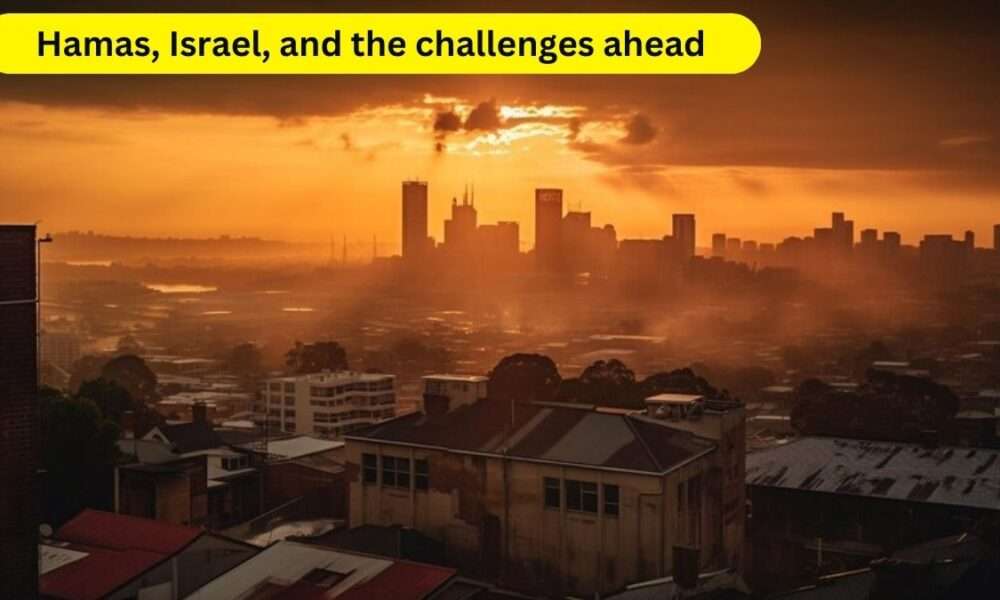The Middle Eastern geopolitics conflict between Hamas and Israel is a significant global concern. This page delves into the complexities of this conflict, revealing the main players, underlying information, and the likelihood of a peaceful resolution.
Understanding Hamas
Palestinians who are interested in liberating Palestine—including the West Bank and Gaza Strip—from Israeli rule are members of the political and armed organisation Hamas. Because of its animosity for the Israeli government and because it represents resistance to oppression, Hamas is embraced by Palestinians. In 1987, during the First Intifada, Hamas was established.
The History of Hamas
Due to its military confrontations with Israeli troops and its provision of social services, the Palestinian organisation Hamas rose to popularity in the late 1980s and became a powerful force in Palestinian politics and society.
Hamas’ Political Wing
Despite being considered a terrorist organisation by several nations, Hamas has ruled Gaza since 2007 and is represented in the Palestinian Legislative Council.
Hamas’ Military Wing
Hamas’ military arm, the Izz al-Din al-Qassam Brigades, is a terrorist group that has been connected to many assaults against Israel that have sparked conflict and bloodshed in the area.
The Conflict with Israel
The Israeli-Palestinian conflict revolves around borders, refugee issues, and Jerusalem’s status, with Israeli military actions and Hamas’ guerilla warfare and rocket attacks causing cycles of suffering and bloodshed on both sides.
Peace Initiatives
Despite numerous peace attempts and talks, such as the Oslo Accords, Camp David Summit, and Abraham Accords, the fundamental issues remain unresolved despite varying degrees of success.
The Challenges Ahead
The challenges ahead are numerous. The conflict involves addressing borders, refugees, and Jerusalem, while the West Bank political rift between Hamas and the Palestinian Authority complicates the peace process.
International Perspectives
For the peace process to succeed, international collaboration is necessary. While some nations, such as the US, support Israel, other nations, such as Iran and Turkey, favour the Palestinian cause.The dynamics of the war are influenced by international support and condemnation.
Humanitarian Crisis in Gaza
Due to a lengthy humanitarian catastrophe, Gaza’s population has had restricted access to healthcare, education, and basic essentials. The situation has been made worse by the embargo enforced by Egypt and Israel as well as internal Palestinian tensions.
Prospects for Peace
The hope for peace must not be given up despite the obstacles. A long-term settlement to the issue still requires international mediation, diplomacy, and dialogue.
The United Nations’ Function
In order to promote a two-state solution and for humanitarian help to reach the region, the United Nations is essential. Its goal is to discover a way ahead that is peaceful.
The Human Cost
The war has claimed the lives of both Israeli and Palestinian citizens, uprooting them and leaving them without loved ones. Particularly the younger generation experiences long-lasting emotional repercussions, which begs the issue of what lies next.
Regional Impact
There is an impact of the ongoing conflict beyond of Gaza and Israel. It affects Egypt and Jordan, two adjacent countries that have peace accords with Israel, as well as Syria and Lebanon, where Palestinian refugee camps have long been a source of strife.
Mediation Efforts
Numerous parties, both domestically and internationally, have attempted to mediate a resolution to the conflict. The Quartet—the United Nations, the United States, the European Union, and Russia—has played a significant role in Middle East diplomacy. However, despite several peace accords and dialogues, a meaningful resolution has been elusive.
Public Opinion
Views on the war among the public are very diverse. Divergent opinions exist in Israel about the best course of action, with some calling for a more accommodative attitude towards Hamas and others for a more forceful one. Similar differences exist in the Palestinian areas about the appropriate means of achieving objectives; some favour diplomacy, while others call for military resistance.
Regional Dynamics
The larger regional dynamics are also quite important. For instance, Iran supports Hamas and other Palestinian organisations, while Saudi Arabia, a major ally of the United States, has been pushing for a more unifying Arab stance on the Israeli-Palestinian issue.
Conclusion
A complex web of geopolitical agendas, humanitarian concerns, and historical grievances encircles Israel’s predicament with Hamas and the impending challenges. Resolving this enduring conflict remains a pressing issue for global peace and stability.
FAQ’s
What is Hamas’s primary objective?
The liberation of Palestine from Israeli occupation is the main objective of Hamas.
Is Hamas solely a military organization?
No, Hamas possesses both armed and political branches.
What fundamental problems exist between Israel and the Palestinians?
The status of Jerusalem, borders, and refugees are among the main concerns.
How does the international community influence the conflict?
International support and condemnation impact the dynamics of the conflict.
What part does the UN play in bringing about peace?
The UN promotes a two-state solution and helps the area get humanitarian relief.
Read More: Techburneh.com










